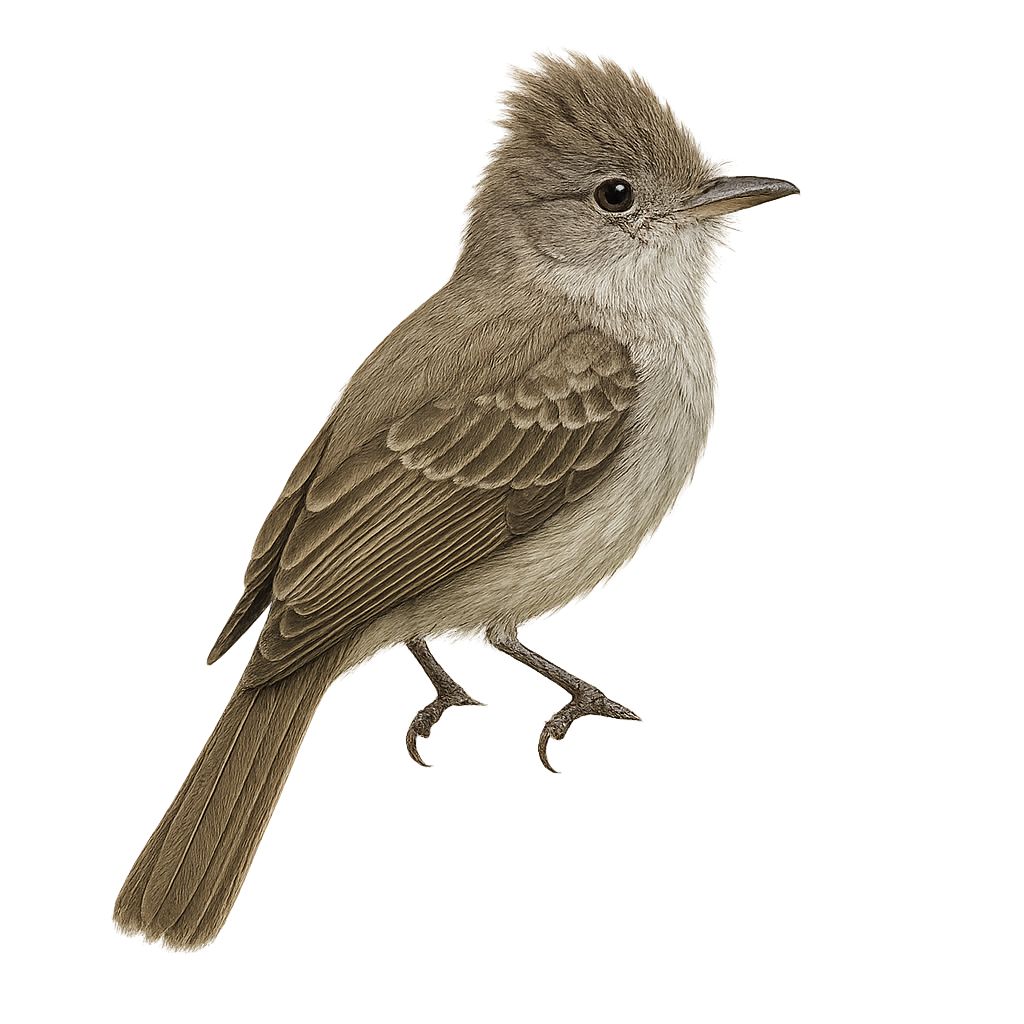Your wildlife photography guide.
Explore the large elaenia in detail, study its behavior, prepare your shots.
Where to observe and photograph the large elaenia in the wild
Learn where and when to spot the large elaenia in the wild, how to identify the species based on distinctive features, and what natural environments it inhabits. The WildlifePhotographer app offers tailored photography tips that reflect the large elaenia’s behavior, helping you capture better wildlife images. Explore the full species profile for key information including description, habitat, active periods, and approach techniques.
Large Elaenia
Scientific name: Elaenia spectabilis

IUCN Status: Least Concern
Family: TYRANNIDAE
Group: Birds
Sensitivity to human approach: Suspicious
Minimum approach distance: 10 m
Courtship display: October to January
Incubation: 15-17 jours
Hatchings: October to February
Habitat:
Tropical forests, subtropical forests, open wooded areas
Activity period :
Primarily active during the day, with peak activity in the morning and late afternoon.
Identification and description:
The Large Elaenia is a bird from the Tyrannidae family, identifiable by its medium size and primarily olive-green plumage with lighter shades on the belly. Its short, robust beak is suited for its mainly insectivorous diet, although it also consumes fruits. It is primarily found in tropical and subtropical forests but also adapts to open wooded areas. Its song is a melodious trill, often heard at dawn. This bird is migratory, moving with the seasons to find food resources. It is generally solitary or seen in small family groups.
Recommended lens:
400 mm – adjust based on distance, desired framing (portrait or habitat), and approach conditions.
Photography tips:
To photograph the Large Elaenia, it is advisable to use a telephoto lens of at least 400mm to capture detailed images without disturbing the bird. Look for it early in the morning when its activity is at its peak. Be patient and discreet, as this bird can be suspicious. Use a tripod to stabilize your camera, especially in wooded areas where light may be limited. Take advantage of its distinctive song to locate it more easily.
The WildlifePhotographer App is coming soon!
Be the first to explore the best nature spots, track rutting seasons, log your observations, and observe more wildlife.
Already 1 431 wildlife lovers subscribed worldwide

